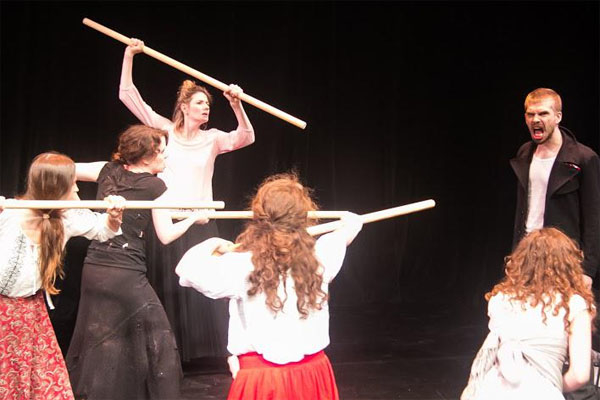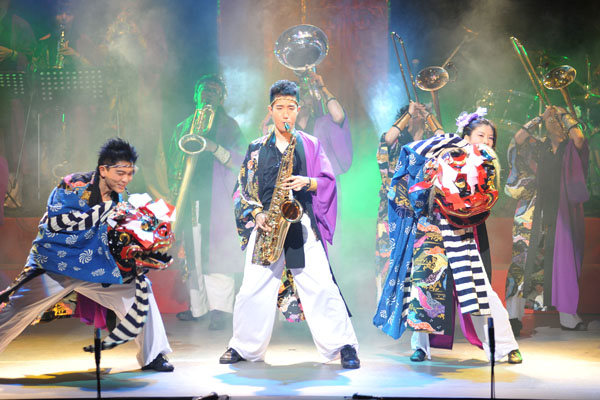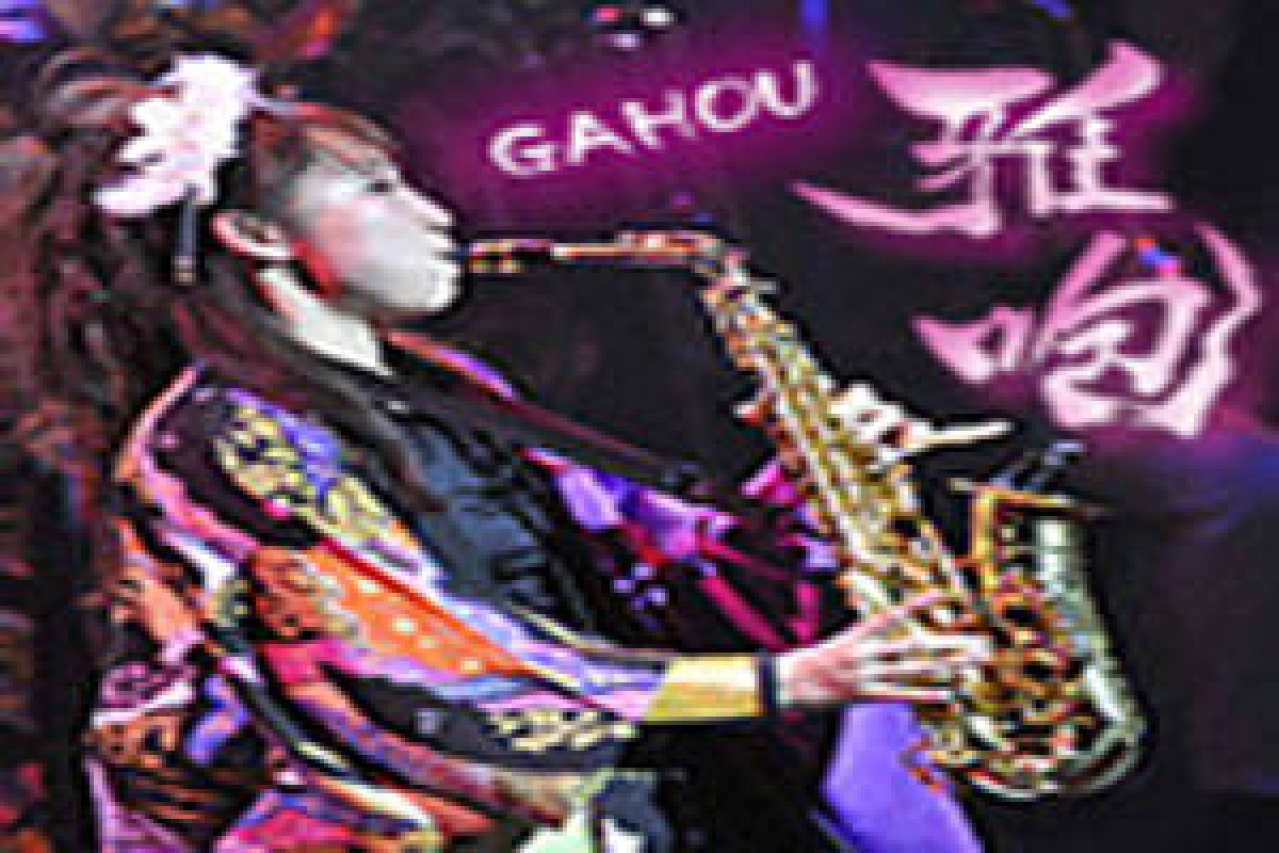FringeNYC 2015: Ferry Play; Fuente Ovejuna; Gahou International Sunrise

(© This is Not a Theatre Company)
In a venue as constraining as the Fringe Festival (in which schedules must be strictly enforced in order to facilitate 185 different shows), it is refreshing to find a play you can enjoy almost anytime and long after the festival has ended. Ferry Play by "This Is Not a Theatre Company" is just such a show. Requiring only a smartphone and a pair of earbuds, this site-specific play takes place on the Staten Island Ferry, with new performances roughly every 30 minutes (whenever the boat departs Manhattan), 24/7.
We are told that everyone on the boat is an actor (conscripted quite unbeknownst to them) and the audio piping into your ears from the play's custom-made app allows you to choose your own adventure with them. It's a thrilling experiment with form, leaving the viewer wishing for equally daring content. Sadly, Jessie Bear's text feels more like a self-help podcast than an actual work of drama.
As the ferry lurches forward we hear a harried mom (Gabriela Agape) and her two children (Isabel and Lindsay Bregenzer) attempt to secure a place on the starboard railing to see The Statue of Liberty. This micro-drama gives way to an overheard conversation between two drunks (Stephen Bennett and J. Stephen Brantley) and, eventually, the narration of the pensively morbid April (Lily Narbonne), who likes to ride the ferry and contemplate what it would be like to disappear into New York harbor. "Right now, on this boat, someone is thinking about death," she informs us. Lady, I think it's you.
Granted, she's a far more interesting companion than our second-act narrator Paul (Tom Nelis), who runs out the clock with empty platitudes. "You are here," he repeats in a dulcet tone, intimately describing the feel of the sun's rays and the smell of popcorn. Imploring an audience to truly observe is a noble and ancient artistic task somewhat undermined here by the rigidity of prerecorded audio. What if it had been a rainy day? I certainly didn't smell any popcorn.
Still, "This Is Not a Theatre Company" should be applauded for pushing the boundaries of our definition of theater. One can imagine future "smartphone plays" (the term the company uses for this work) and even serials that employ a similar form, but offer far more stimulating content.

(© Ducdame Ensemble)
"Witness the uprising of 15th-century Spain's 99%," claims the blurb for Ducdame Ensemble's production of Lope de Vega's Fuente Ovejuna. While the themes of this 400-year-old Spanish drama are indeed timeless, modern-day occupiers are likely to take a dim view of its lessons, specifically its unquestioning praise for the reign of a king and queen.
Commander Gómez (Sam Gilroy) lords over the little town of Fuente Ovejuna like a petty tyrant. He tries to rape Laurencia (Jane May), but she is valiantly saved by the shoeless Frondoso (Alexander Kirby). Frondoso and Laurencia wed and the commander cruelly crashes the festivities, sending the women of the town into a murderous rage. They refuse to answer to any rule but that of Ferdinand and Isabella.
William Oldroyd's production (using Adrian Mitchell's English translation) is zippy and efficient, shaving the play down to one hour. Q Morrow beautifully underscores the action and transitions with classical Spanish guitar. The feisty young cast dives into the story, luxuriating in its epic gore and horribleness. An extended torture scene featuring blood-curdling offstage screams sent one audience member running from the performance I attended.
Like many of Shakespeare's history plays, Fuente Ovejuna can't quite escape the feeling of being monarchist propaganda. While the Bard of Avon committed to verse the glorious rise of the Tudors, de Vega immortalized the righteous rule of Ferdinand and Isabella (direct ancestors to his king, Philip III). It is less a celebration of people power than it is a ballad in praise of benevolent dictatorship.
Cori Hundt is appropriately majestic as Isabella, while Alexander Kirby keeps us snickering with his portrayal of a lisping Ferdinand. Fuente Ovejuna is a wonderful excuse for such grandiose performances, but a handbook for revolutionaries this is not.

(© Shinya Watanabe)
The Crazy Angel Company of Japan has some crazy fun in store for you with Gahou International Sunrise. The Kanji characters for Gahou (雅咆) separately mean "beautiful motion" and "roaring," which is a fairly accurate description of the event: essentially a live marching band onstage. For a little over one hour the 15-member ensemble creates music that is both fierce and gorgeous while performing Mariko Funasaki's frenetic choreography and color-guard routines. The energy coming from the stage is just so contagious you can't help but surrender to the sheer, unadulterated bliss.
Director Yoshiaki Saito plays trumpet and charms us as the evening's emcee. "How's my English?," he asks the audience, adding, "Better than Ken Watanabe, I think." A festive atmosphere pervades as we become part of the music with our Naruko, which we are handed as we enter the theater.
Kanaeo Howokwa's compositions offer an eclectic mix of highly listenable music: Some of the songs sound like they could have been written for the rock band Chicago. A medley of the traditional Japanese folk song "Sakura" and the English ballad "Scarborough Fair" cedes to a jazzy arrangement of "Sakura," really showing off the group's range.
The Crazy Angel Company has a killer brass section. Everything is supported by the relentless Taiko beat of Shinchiro Hayashi. All of the musicians double as dancers. Instruments in hand, they march in formation and leap toward the audience. If you ever get the opportunity to see this group live, take it.













